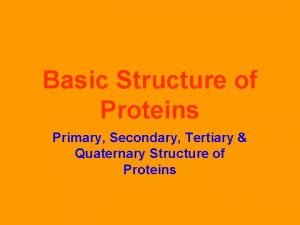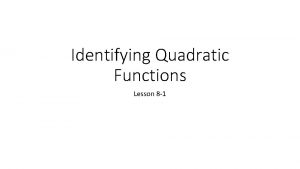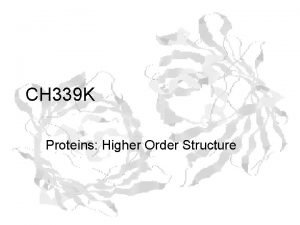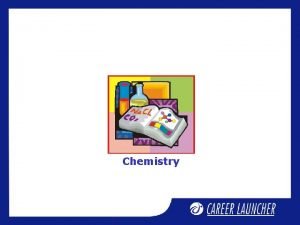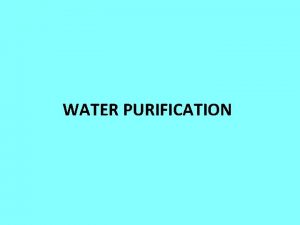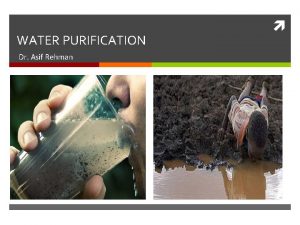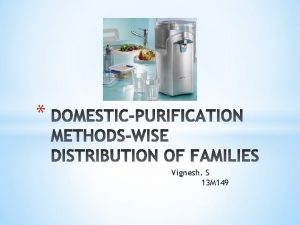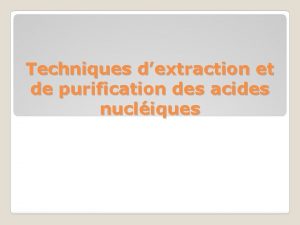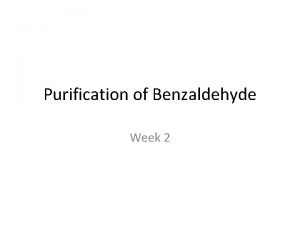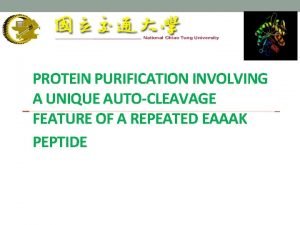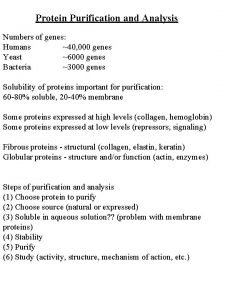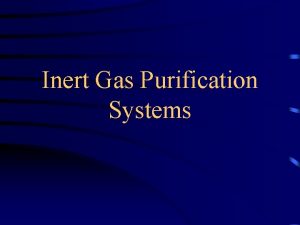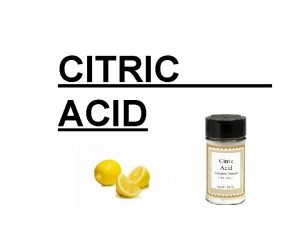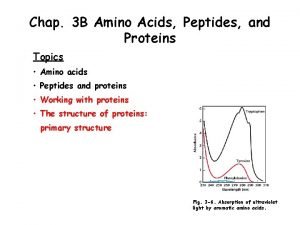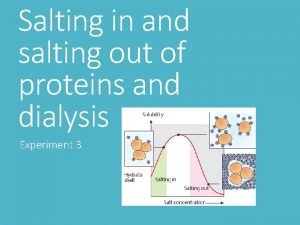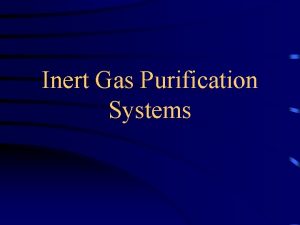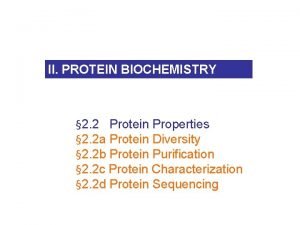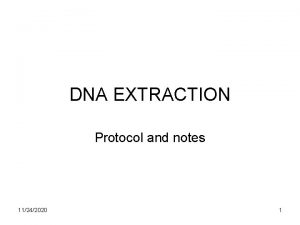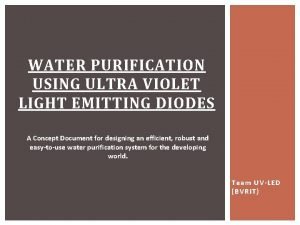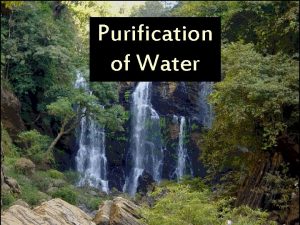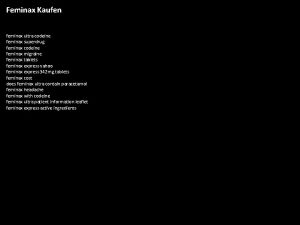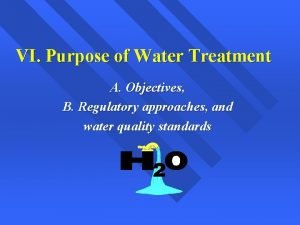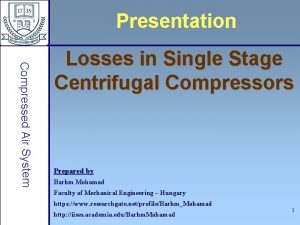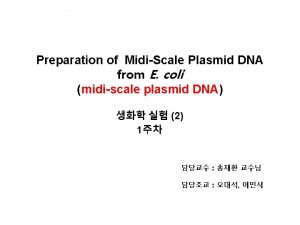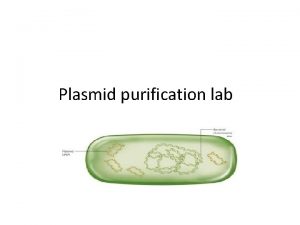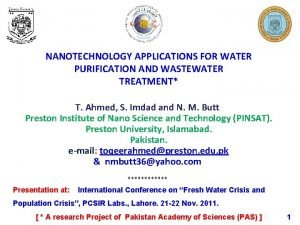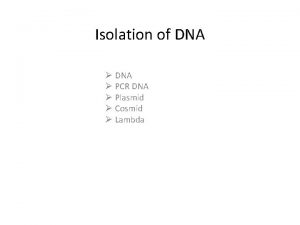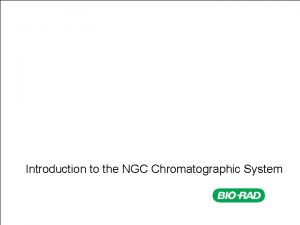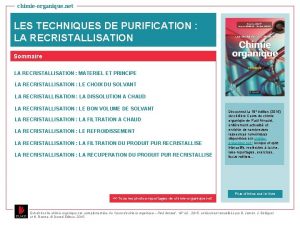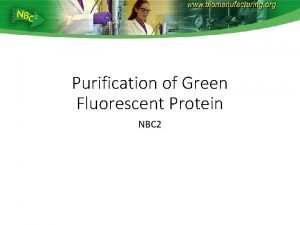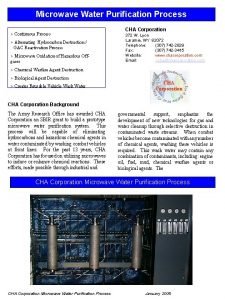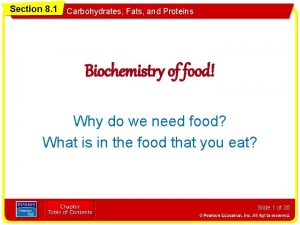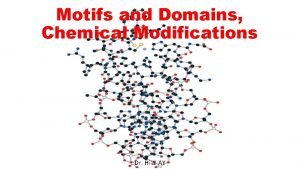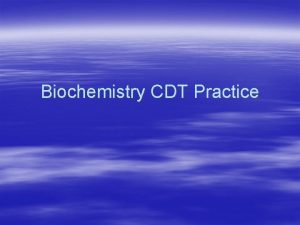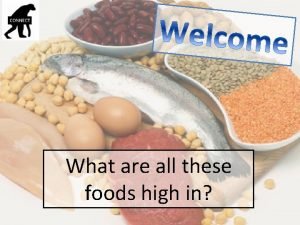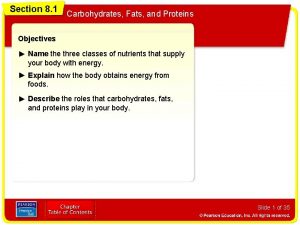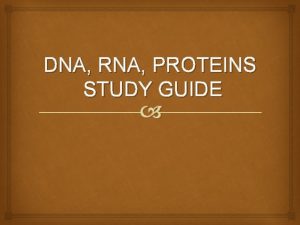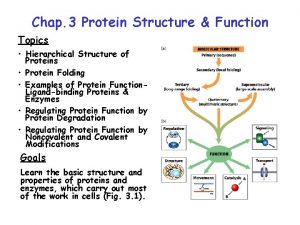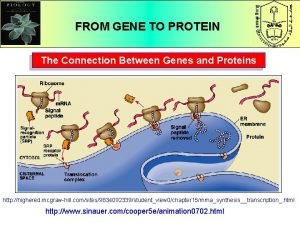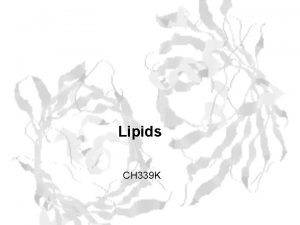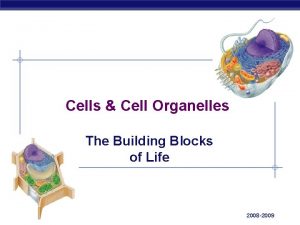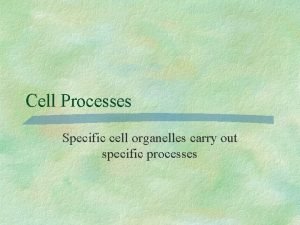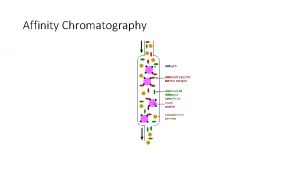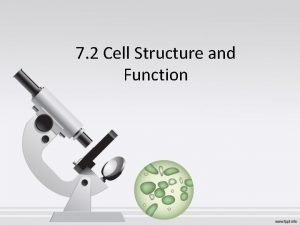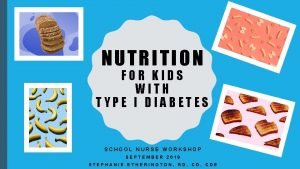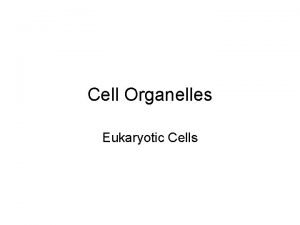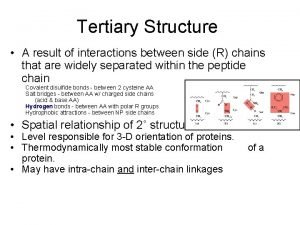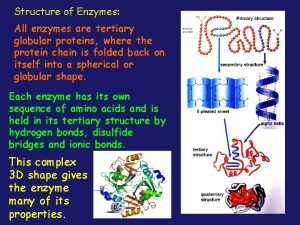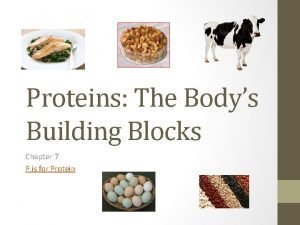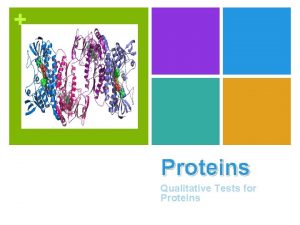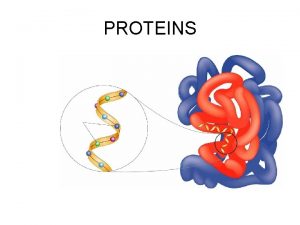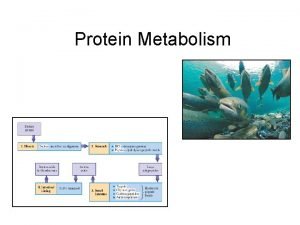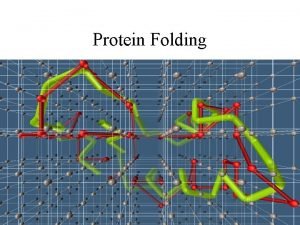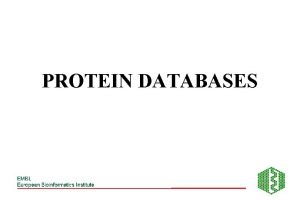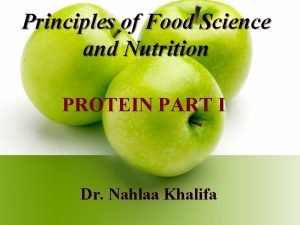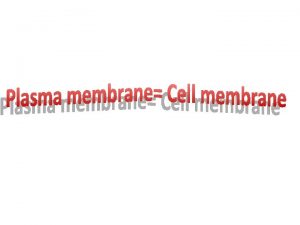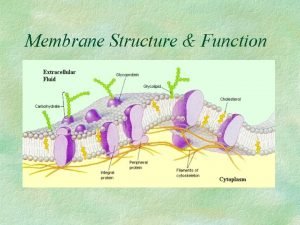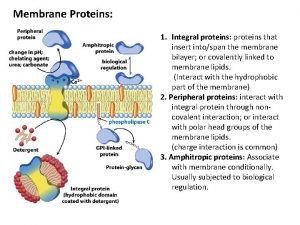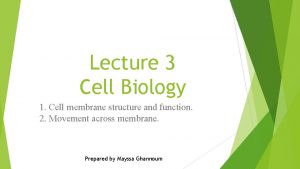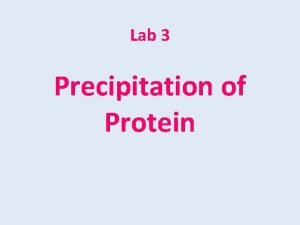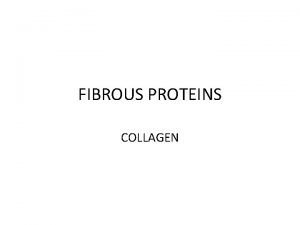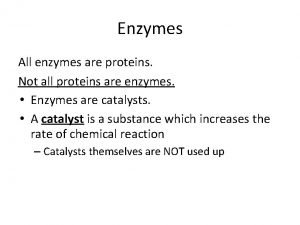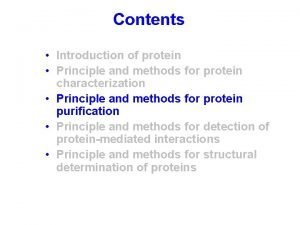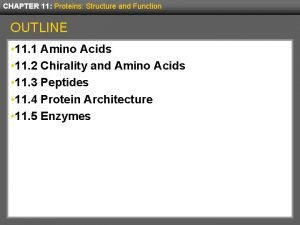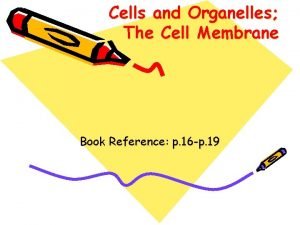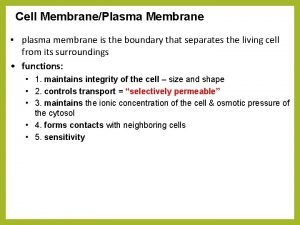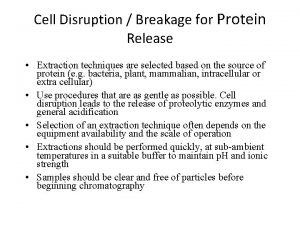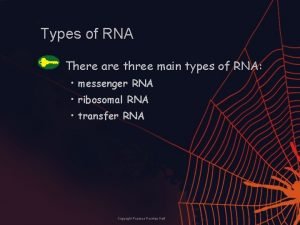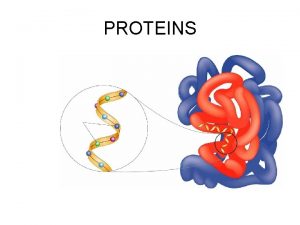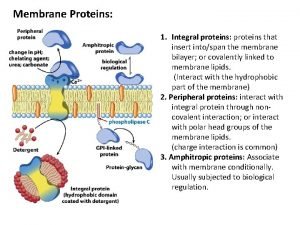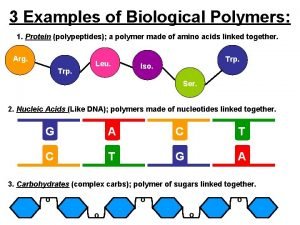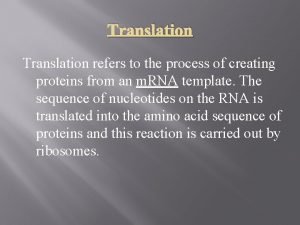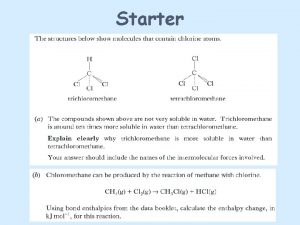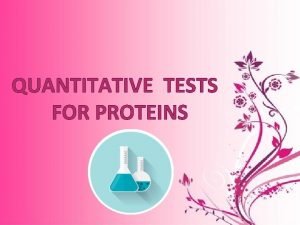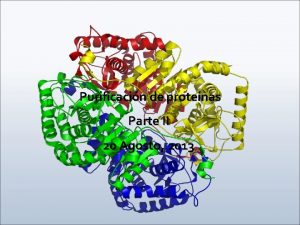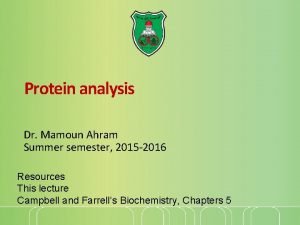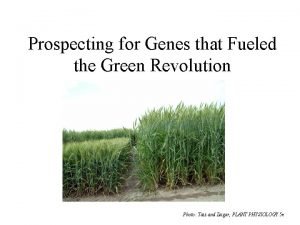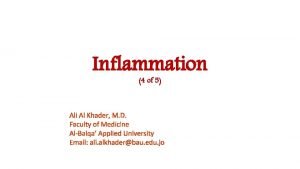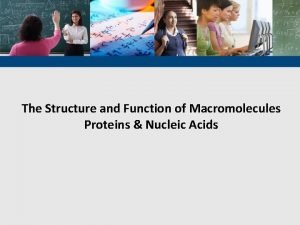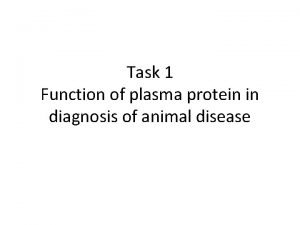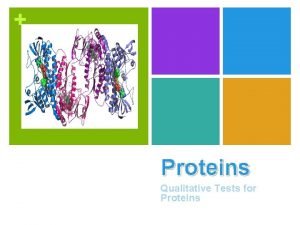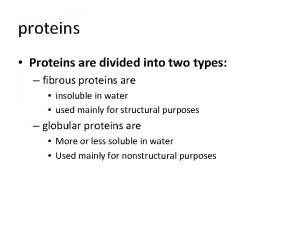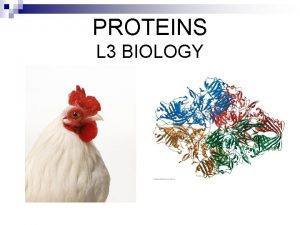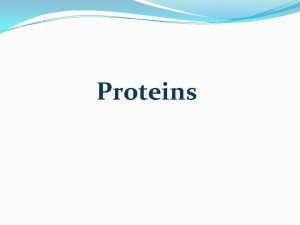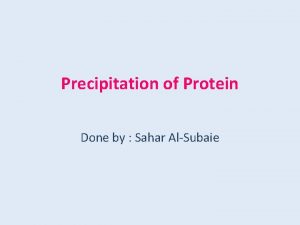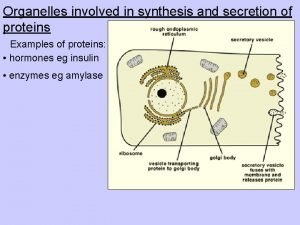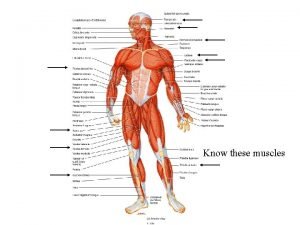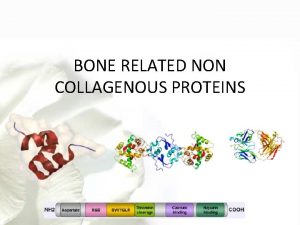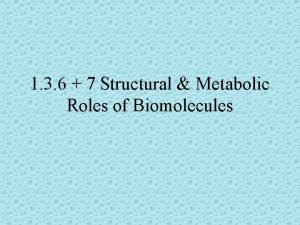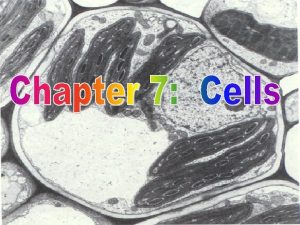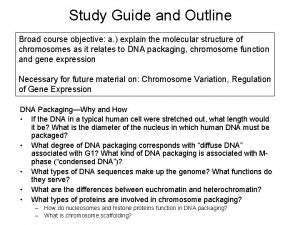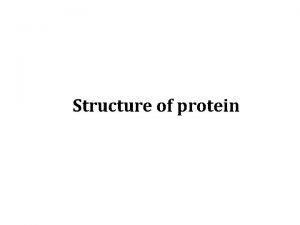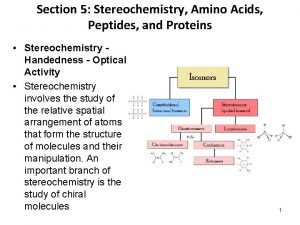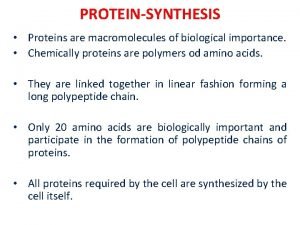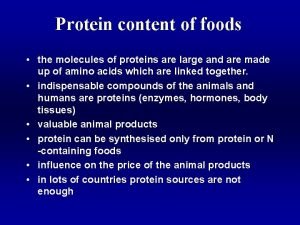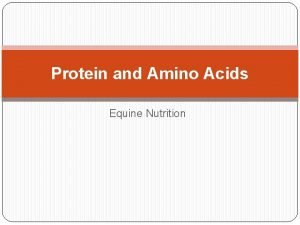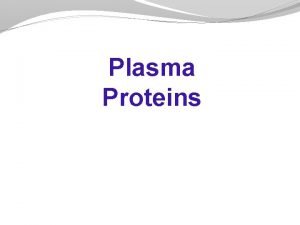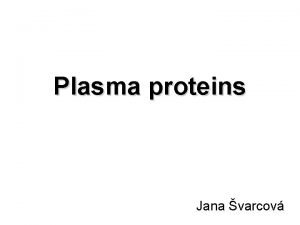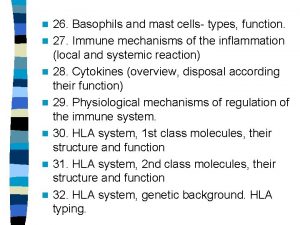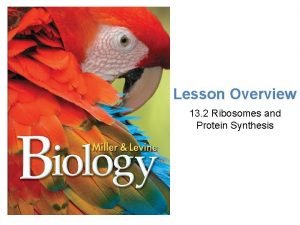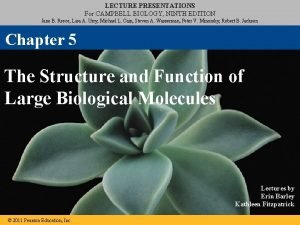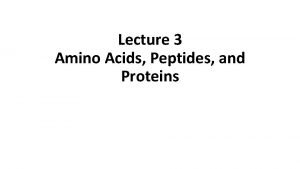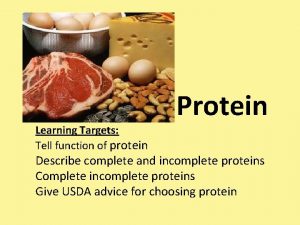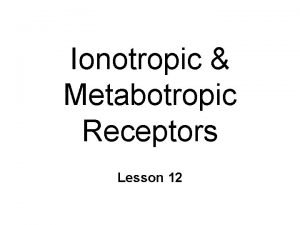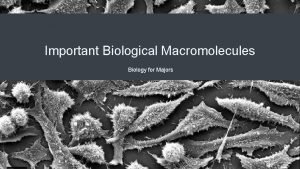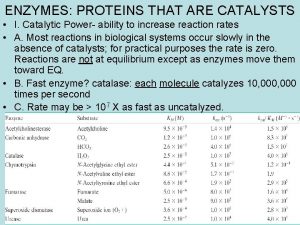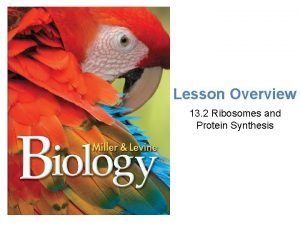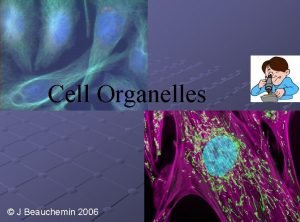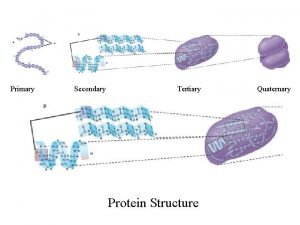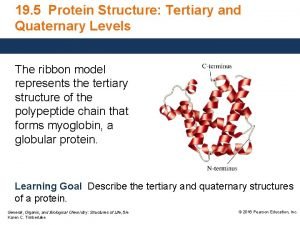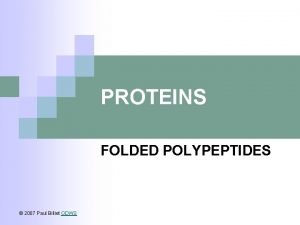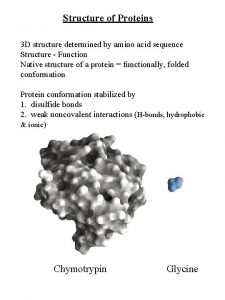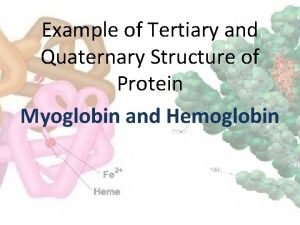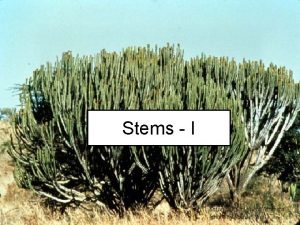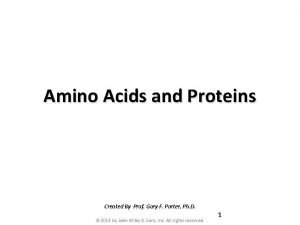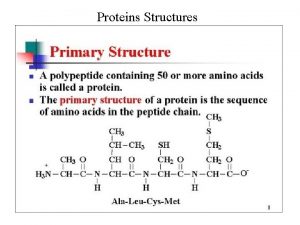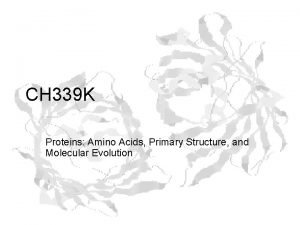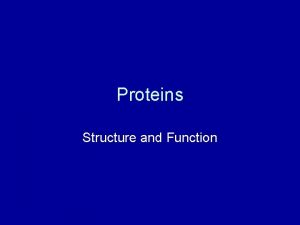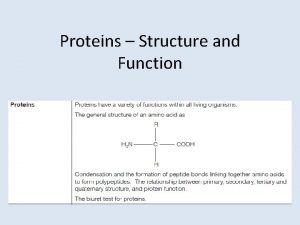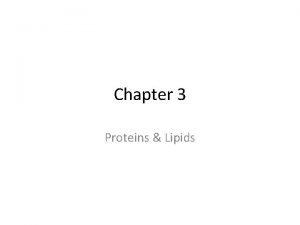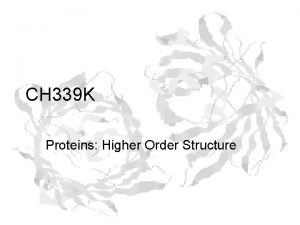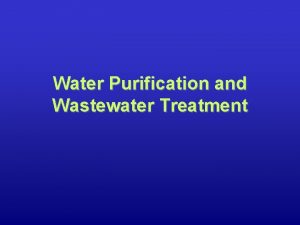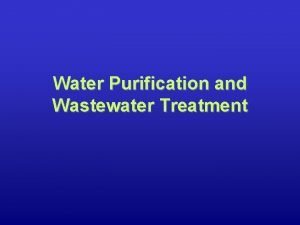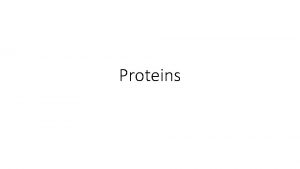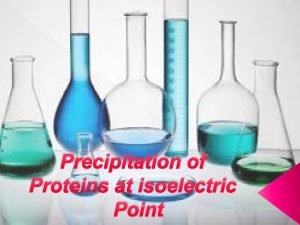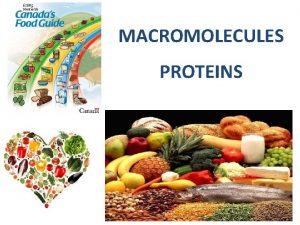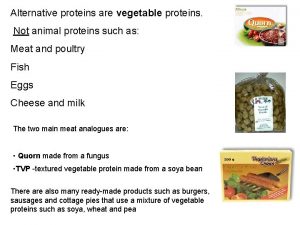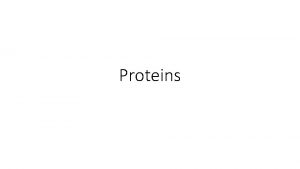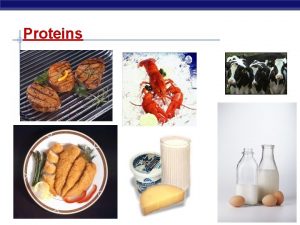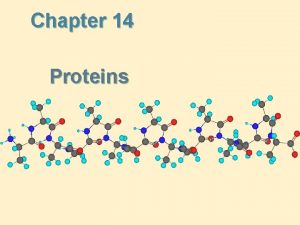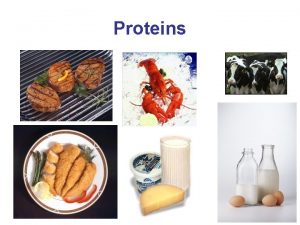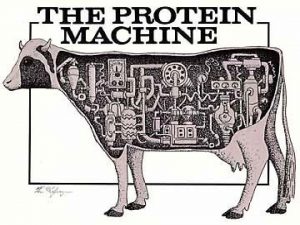CH 339 K Proteins Primary Structure Purification and

















































































































































- Slides: 145

CH 339 K Proteins: Primary Structure, Purification, and Sequencing

a-Amino Acid a

• All amino acids as incorporated are in the L-form • Some amino acids can be changed to D- after incorporation • D-amino acids occur in some non-protein molecules

I prefer this layout, personally…



2 Amides


The Acidic and the Amide Amino Acids Exist as Conjugate Pairs




Ionizable Side Chains

Hydrogen Bond Donors / Acceptors

Disulfide formation

Modified Amino Acids 4 -Hydroxyproline Collagen 5 -Hydroxylysine Collagen 6 -N-Methyllysine Histones g-Carboxygultamate Clotting factors Desmosine Elastin Selenocysteine Several enzymes (e. g. glutathione peroxidase)

A Modified Amino Acid That Can Kill You Histidine Diphthamide (2 -Amino-3 -[2 -(3 -carbamoyl-3 -trimethylammoniopropyl)-3 H-imidazol-4 -yl]propanoate)

Diphthamide Continued – Elongation Factor 2 • Diphthamide is a modified Histidine residue in Eukaryotic Elongation Factor 2 • EF-2 is required for the translocation step in protein synthesis

Corynebacterium diphtheriae Corynebacteriophage

Diphtheria Toxin Action • Virus infects bacterium • Infected bacxterium produces toxin • Toxin binds receptor on cell • Receptor-toxin complex is endocytosed • Endocytic vessel becomes acidic • Receptor releases toxin • Toxin escapes endocytic vessel into cytoplasm • Bad things happen

Diphtheria Toxin Action • Diphtheria toxin adds a bulky group to diphthamide • e. EF 2 is inactivated • Cell quits making protein • Cell(s) die • Victim dies

Other Amino Acids


Every a-amino acid has at least 2 p. Ka’s




Polymerization DG 0’ = +10 -15 k. J/mol

In vivo, amino acids are activated by coupling to t. RNA Polymerization of activated a. a. : DGo’ = -15 -20 k. J/mol

• In vitro, a starting amino acid can be coupled to a solid matrix • Another amino acid with • A protected amino group • An activating group at the carboxy group • Can be coupled • This method runs backwards from in vivo synthesis (C N)

Peptide Bond

Resonance stabilization of peptide bond

Cis-trans isomerization in prolines • Other amino acids have a trans-cis ratio of ~ 1000: 1 • Prolines have cis: trans ratio of ~ 3: 1 • Ring structure of proline minimizes DG 0 difference







Physical Methods or How to Purify and Sequence a Weapons-Grade Protein

First Question How do I measure the amount of protein I have?

UV Absorption Spectrophotometry


Beer-Lambert Law c = concentration l = path length e = extinction coefficient An Absorbance = 2 means that only 1% of the incident beam is getting through.

Transmittance and Absorbance vs. Concentration Transmittance vs. Concentration


Second Question How can I spot my protein in the great mass of different proteins?

Electrophoresis


The frictional coefficient f depends on the size of the molecule, which in turn depends upon the molecular mass, so: i. e. the velocity depends on the charge/mass ratio, which varies from protein to protein

Polyacrylamide Gels


Polyacrylamide gel electrophoresis of whole cell proteins of three strains of lactic acid bacteria.

Agarose Gelidium sp.


SDS PAGE Sodium Dodecyl (Lauryl) Sulfate SDS binds to proteins at a constant ratio of 1. 4 g SDS/g protein

Constant q/M ratio




Disulfide cleavage

Disulfide cleavage and chain separation + b. ME

Isoelectric Point


Isoelectric Focusing

p. H

Carrier Ampholytes • Amphoteric Electrolytes • Mixture of molecules containing multiple amino- and carboxyl- groups with closely spaced p. Is • Partition into a smooth, buffered p. H gradient

Separation by p. I

Isoelectric Focusing Below the p. I, a protein has a positive charge and migrates toward the cathode Above the p. I, a protein has a negative charge and migrates toward the anode

Isoelectric Focusing Foot Flesh Extracts from Pomacea flagellata and Pomacea patula catemacensis

STOP HERE

Protein Purification Steps 1 unit = amount of enzyme that catalyzes conversion of 1 mmol of substrate to product in 1 minute

Purification visualized

Example: Purification of Ricin

Georgi Markov 1929 -1978


Ricinus communis – castor oil plant

Ricin B chain (the attachment bit)

Ricin uptake and release 1. 2. 3. 4. 5. 6. 7. endocytosis by coated pits and vesicles or, endocytosis by smooth pits and vesicles. The vesicles fuse with an endosome. Many ricin molecules are returned to the cell surface by exocytosis, or the vesicles may fuse to lysosomes where the ricin would be destroyed. If the ricin-containing vesicles fuse to the Trans Golgi Network, (TGN), there ís still a chance they may return to the cell surface. Toxic action will occur when RTA, aided by RTB, penetrates the TGN membrane and is liberated into the cytosol.

Ricin Action • Ricin and related enzymes remove an adenine base from the large ribosomal RNA • Shut down protein synthesis

The possibility that ricin might be used as an asymmetric warfare weapon has not escaped the attention of the armed services. The last time I was qualified to know for sure, there were no effective antidotes.

Significant Terrorist Incidents Involving Chemical and Biological Agents Year 1946 1970 1972 1974 1980 1984 1991 1990 -1995 1998 2001 2003 -2004 Organization DIN ("Revenge" in Hebrew; also Dahm Y'Israel Nokeam, "Avenging Israel's Blood") (Germany) Weather Underground (United States) R. I. S. E (United States) Aliens of America (Alphabet Bomber) (United States) R. A. F. (Rote Armee Faktion) (Germany) Rajneshee Cult (United States) Minnesota Patriots Council (United States) Aum Shinrikyo (Japan) Aryan Nation (United States) The Covenant and the Sword (United States) Republic of Texas (United States) Unknown (United States) Fallen Angel (United States) Agents Arsenic Compounds Tried to obtain agents from Ft. Detrick by blackmailing a homosexual serviceman. Typhoid, diphtheria, dysentery, meningitis and several others to be delivered by aerosol. Nerve Agents Botulinum toxin Salmonella enterica serovar typhimurium Ricin Bacteria and viral agents, toxins, organophosphorus nerve agents. Yersinia pestis Ricin Bacterial and viral agents Bacillus anthracis Ricin

Raw Extract (NH 4)2 SO 4 Cut Affinity Gel Filtration

Salting In – Salting out • salting in: Increasing ionic strength increases protein solubility • salting out: Increasing further leads to a loss of solubility

Salting in – salting out The solubility of haemoglobin in different electrolytes as a function of ionic strength. Derived from original data by Green, A. A. J. Biol. Chem. 1932, 95, 47

Salting in: Counterions help prevent formation of interchain salt links Solubility reaches minimum at p. I

Salting out: there’s simply less water available to solubilize the protein.

Different proteins have different solubilities in (NH 4)2 SO 4

Lyotropic Chaotropic. Series Cations: N(CH 3)3 H+> NH 4+> K+> Na+> Li+> Mg 2+>Ca 2+> Al 3+> guanidinium / urea Anions: SO 42−> HPO 42−> CH 3 COO−> citrate > tartrate > F−> Cl−> Br−> I−> NO 3−> Cl. O 4−> SCN−

1) Bring to 37% Saturation – ricin still soluble, many other proteins ppt 2) Collect supernatant 3) Bring to 67% Saturation – ricin ppt, many remaining proteins still soluble 4) Collect pellet 5) Redissolve in buffer

Dialysis and Ultrafiltration (How do you get the %@$&#! salt out? )

Raw Extract (NH 4)2 SO 4 Cut Affinity Gel Filtration

Separation by chromatography Basic Idea: You have a stationary phase You have a mobile phase Your material partitions out between the phases.

Affinity Chromatography


Structure of Agarose is a polymer of agarobiose, which in turn consists of one unit each of galactose and 3, 6 -anhydro-a-L-galactose. Ricin sticks to galactose, so store-bought agarose acts as an affinity column right out of the bottle, with ricin binding the beads while other proteins wash through.

Begin adding 0. 2 M Lactose

Raw Extract (NH 4)2 SO 4 Cut Affinity Gel Filtration

Castor Beans contain two proteins that bind galactose

Gel Filtration

Gel Filtration

Gel Filtration (aka Size Exclusion)

You knew I couldn’t leave it at that… Vm = matrix volume Vo = void volume Vp = pore volume Vt = total volume Ve = elution volume (1 a) Vt = Vo + Vp or (1 b) Vp = Vt - Vo (2) Ve = Vo + Kav*Vp Combining 1 b with 2

• a and b represent the effective separation range • c corresponds to the exclusion limit

Kav

Note: smaller = slower, whereas in SDS-PAGE, smaller = faster. Note Fig. 3. Measurement of molecular weight of native NAGase enzyme of green crab by gel filtration on Sephadex G-200: standard proteins (empty circles); green crab NAGase (filled circle). From Zhang, J. P. , Chen, Q. X. , Wang, Q. , and Xie, J. J. (2006) Biochemistry (Moscow) 71(Supp. 1) 855 -859.

Gel Filtration Separation of Ricin RCA

Raw Extract (NH 4)2 SO 4 Cut Affinity Gel Filtration

Okay, Now Let’s Sequence the A-Chain

Bovine Insulin 21 residue A chain 31 residue B chain Connected by disulfides In order to sequence the protein, the chains have to be separated


Chain Separation • Interchain disulfide broken by high concentrations of b. ME • Chains are about the same size – but can take advantage of different p. Is – B-Chain – A-Chain p. I ~ 5. 3 p. I ~ 7. 2

Ion Exchangers


• Apply b. ME – treated ricin to DEAE-cellulose at p. H 7 • At p. H 7: • A chain (p. Ka 7. 2) is essentially uncharged, • B chain (p. Ka 4. 8) is highly negative • A chain washes through the column • B chain sticks, eluted with gradient of Na. Cl

2 -D Electrophoresis (an aside) • Can use two different properties of a protein to separate electrophoretically • For analysis of cellular protein content, often use 2 -dimensional electrophoresis: • 1 st dimension is isoelectric focusing • 2 nd dimension is SDS PAGE




2 -D Electrophoresis (cont. ) • Can use other protein properties to separate – Simple PAGE at 2 different p. Hs – PAGE and SDS PAGE

Sequencing with Phenylisothiocyanate

• Applied Biosystems 492 Procise Protein Sequencer


Chain Cleavage: Cyanogen Bromide


C-Terminal Sequencing • Carboxypeptidases are enzymes that chew proteins from the carboxy terminus • Can incubate a protein (preferably denatured – more later) with a carboxypeptidase • Remove aliquot at intervals (time course) • Run amino acid analysis of aliquots

C-Terminal Sequencing of Rat Plasma Selenoprotein From Himeno et al (1996) J. Biol. Chem. 271: 15769 -15775.

Tandem Mass Spectrometry can also be used to determine peptide sequences

MOLECULAR EVOLUTION


Neutral Theory of Molecular Evolution • Kimura (1968) • Mutations can be: – Advantageous – Detrimental – Neutral (no good or bad phenotypic effect) • Advantageous mutations are rapidly fixed, but really rare • Diadvantageous mutations are rapidly eliminated • Neutral mutations accumulate

What Happens to a Neutral Mutation? • Frequency subject to random chance • Will carrier of gene reproduce? • Many born but few survive – Partly selection – Mostly dumb luck • Gene can have two fates – Elimination (frequent – Fixation (rare)

Genetic Drift in Action Our green genes are evolutionarily superior! Ow! Never mind…

Simulation of Genetic Drift • 100 Mutations x 100 generations: • 1 gets fixed • 2 still exist • 97 eliminated (most almost immediately) 1 Frequency 0. 8 0. 6 0. 4 0. 2 0 0 25 50 Generation 75 100

Rates of Change

Protein Evolution Rates Different proteins have different rates

Protein Evolution Rates Different proteins have different rates

Rates (cont. ) • Slow rates in proteins critical to basic functions • E. g. histones ≈ 6 x 10 -12 changes/a. a. /year

Rates (cont. ) Fibrinopeptides • Theoretical max mutation rate • Last step in blood clotting pathway • Thrombin converts fibrinogen to fibrin

Fibrinopeptides keep fibrinogens from sticking together.

Rates (cont. ) • Only constraint on sequence is that it has to physically be there • Fibrinopeptide limit ≈ 9 x 10 -9 changes/a. a. /year

Relationships among plant hemoglobins Arredondo-Peter, Raul, et al (1998) Plant Physiol. 118: 1121 -1125

Amino acid sequences of several ribosome-inhibiting proteins

Phylogenetic trees built from the amino acid sequences of type 1 RIP or A chains (A) and B chains (B) of type 2 RIP (ricin-A, ricin-B, and lectin RCAA and RCA-B from castor bean; abrin -A, abrina/b-B, and agglutinin APA-A and APA-B from A. precatorius; SNAI -A and SNAI-B, SNAV-A and SNAV-B, SNAI'-A and SNAI'-B, LRPSN 1 -A and LRPSN 1 -B, LRPSN 2 -A and LRPSN 2 B, and SNA-IV from S. nigra; sieboldinb-A, sieboldinb-B, SSAI-A, and SSAI-B from S. sieboldiana; momordin and momorcharin from Momordica charantia; MIRJA from Mirabilis jalapa; PMRIPm-A and PMRIPm-B, PMRIPt-A and PMRIPt-B from Polygonatum multiflorum; RIPIri. Hol. A 1, RIPIri. Hol. A 2, and RIPIri. Hol. A 3 from iris hybrid; IRAr-A and IRAr-B, IRAb-A and IRAb-B from iris hybrid; SAPOF from S. officinalis; luffin-A and luffin-B from Luffa cylindrica; and karasurin and trichosanthin from Trichosanthes kirilowii) Hao Q. et. al. Plant Physiol. 2010: 125: 866 -876

Phylogenetic tree of Opisthokonts, based on nuclear protein sequences Iñaki Ruiz-Trillo, Andrew J. Roger, Gertraud Burger, Michael W. Gray & B. Franz Lang (2008) Molecular Biology and Evolution, Jan 9
 Primary vs secondary vs tertiary vs quaternary structures
Primary vs secondary vs tertiary vs quaternary structures 888-339-6469
888-339-6469 Lesson 8 homework practice quadratic functions
Lesson 8 homework practice quadratic functions What are derived proteins
What are derived proteins Higher order structure of proteins
Higher order structure of proteins Food sources of nucleic acids
Food sources of nucleic acids Protein purification and characterization techniques
Protein purification and characterization techniques Purification and characterization of organic compounds
Purification and characterization of organic compounds Need of water purification
Need of water purification Orthotolidine arsenite test
Orthotolidine arsenite test Water purification conclusion
Water purification conclusion Purification adn sur colonne de silice
Purification adn sur colonne de silice Purification of water on large scale storage
Purification of water on large scale storage Purification of benzaldehyde
Purification of benzaldehyde Protein purification
Protein purification Gel filtration
Gel filtration Inert gas purification
Inert gas purification Citric acid discovery
Citric acid discovery Purification table
Purification table Salting out protein purification
Salting out protein purification Inert gas purification
Inert gas purification Edman degradation
Edman degradation Dna purification overview
Dna purification overview Diode is used for purification
Diode is used for purification Double pot method of water purification
Double pot method of water purification Feminax ultra tesco
Feminax ultra tesco Rowpu 1500 technical order
Rowpu 1500 technical order Objective of water treatment
Objective of water treatment Iises air purification
Iises air purification Purification of plasmid
Purification of plasmid Purification of plasmid
Purification of plasmid What are plasmid
What are plasmid List of surfactants and hlb values
List of surfactants and hlb values Water purification
Water purification Plasmids
Plasmids Ngc protein purification
Ngc protein purification Purification of plasmid
Purification of plasmid Principe de recristallisation
Principe de recristallisation Gfp purification flow chart
Gfp purification flow chart Continuous purification process
Continuous purification process Section 8-1 carbohydrates fats and proteins answer key
Section 8-1 carbohydrates fats and proteins answer key Protein domains and motifs
Protein domains and motifs Organic compounds such as proteins and starches are too
Organic compounds such as proteins and starches are too Lbv protein list
Lbv protein list Section 8-1 summary carbohydrates fats and proteins
Section 8-1 summary carbohydrates fats and proteins Secondary structure of protein
Secondary structure of protein Dna rna and proteins study guide answers
Dna rna and proteins study guide answers Protein structure
Protein structure What is the connection between genes and proteins
What is the connection between genes and proteins Integral and peripheral proteins
Integral and peripheral proteins Peptides and proteins
Peptides and proteins Ribosome factory part or worker
Ribosome factory part or worker Integral and peripheral proteins
Integral and peripheral proteins Affinity chromatography principle
Affinity chromatography principle Role of the golgi apparatus
Role of the golgi apparatus Diet chart for diabetes
Diet chart for diabetes Centrioles analogy
Centrioles analogy Carrier vs channel proteins
Carrier vs channel proteins Globular vs fibrous proteins
Globular vs fibrous proteins All enzymes are globular proteins
All enzymes are globular proteins Body's building blocks
Body's building blocks Qualitative test for protein
Qualitative test for protein Protein monomers
Protein monomers Protein metabolism notes
Protein metabolism notes How do proteins fold
How do proteins fold Protein databases
Protein databases Quantitative determination of proteins
Quantitative determination of proteins Elementary composition of proteins
Elementary composition of proteins Glycoprotein vs glycolipid
Glycoprotein vs glycolipid Cummings
Cummings Homotropic vs heterotropic
Homotropic vs heterotropic Functions of membrane proteins
Functions of membrane proteins Precipitation of proteins by strong mineral acids
Precipitation of proteins by strong mineral acids Function of fibrous protein
Function of fibrous protein Not all enzymes are proteins
Not all enzymes are proteins Salting out
Salting out Salt bridge amino acids
Salt bridge amino acids Role of cholesterol in cell membrane
Role of cholesterol in cell membrane What is the function of a cell membrane
What is the function of a cell membrane Salting in
Salting in Biomedical importance of protein
Biomedical importance of protein Carries copies of the instructions for assembling proteins
Carries copies of the instructions for assembling proteins Steroid hormones
Steroid hormones Protein classification based on composition
Protein classification based on composition Integral proteins hydrophobic
Integral proteins hydrophobic Polymer of protein example
Polymer of protein example What cell organelle is like lysol spray cleaning the cell
What cell organelle is like lysol spray cleaning the cell Translation refers to:
Translation refers to: Protein hydrolysis
Protein hydrolysis Quantitative test for proteins
Quantitative test for proteins Amphoteric proteins
Amphoteric proteins Amphoteric proteins
Amphoteric proteins Della proteins
Della proteins Al khader proteins
Al khader proteins Structural proteins function
Structural proteins function Define plasma protein
Define plasma protein Qualitative test for proteins
Qualitative test for proteins Proteins are divided into two groups
Proteins are divided into two groups Facts about proteins biology
Facts about proteins biology Protein characteristics
Protein characteristics Precipitation by alkaloidal reagents
Precipitation by alkaloidal reagents Proteins are synthesized in
Proteins are synthesized in Muscular tissue function
Muscular tissue function Food pyramid carbohydrates fats proteins
Food pyramid carbohydrates fats proteins Non collagenous proteins of periodontium
Non collagenous proteins of periodontium Structural role of proteins
Structural role of proteins Onion cell parts
Onion cell parts Transmembrane
Transmembrane Peripheral proteins
Peripheral proteins Euchromatin
Euchromatin What is protein
What is protein How many amino acids are there
How many amino acids are there Biological role of protein
Biological role of protein Conjugated proteins
Conjugated proteins Where are proteins found
Where are proteins found Alhusseini
Alhusseini Introduction to proteins
Introduction to proteins Function of plasma membrane
Function of plasma membrane Globulin types
Globulin types Intracellular proteins
Intracellular proteins Ribosomal proteins
Ribosomal proteins Storage proteins function
Storage proteins function Peptide synthesis
Peptide synthesis Describe a picture
Describe a picture Membrane proteins
Membrane proteins Monomers that make up proteins
Monomers that make up proteins Ace-2 expression
Ace-2 expression Golgi apparatus function
Golgi apparatus function Amino acids are joined together in proteins by
Amino acids are joined together in proteins by Genes contain instructions for assembling
Genes contain instructions for assembling Smallest living unit of life
Smallest living unit of life Organelle trail
Organelle trail Magenta cyan and yellow are the ____ color. *
Magenta cyan and yellow are the ____ color. * Primary secondary and tertiary protein structure
Primary secondary and tertiary protein structure Primary secondary and tertiary protein structure
Primary secondary and tertiary protein structure Primary secondary and tertiary structure of protein
Primary secondary and tertiary structure of protein Fibroin secondary structure
Fibroin secondary structure Secondary protein structure hydrogen bonds
Secondary protein structure hydrogen bonds Myoglobin tertiary or quaternary
Myoglobin tertiary or quaternary Nomenclature of amide
Nomenclature of amide Monocot or dicot
Monocot or dicot Protein primary structure
Protein primary structure The primary tool used in structured chart is a
The primary tool used in structured chart is a Amino acid structures
Amino acid structures Structural ambiguity exercises
Structural ambiguity exercises Deep and surface structure
Deep and surface structure
